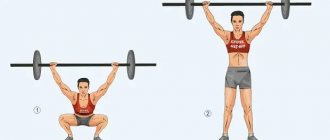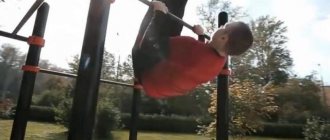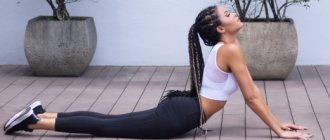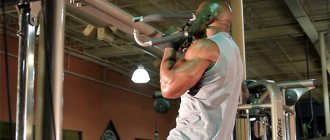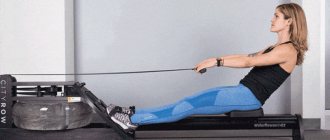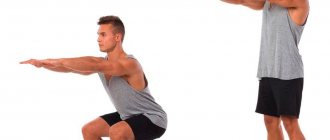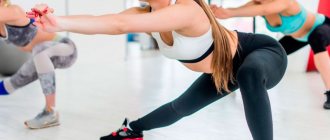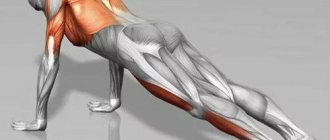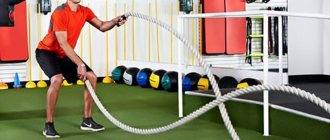Share:
The plank is one of the most popular exercises in fitness. It is often performed by athletes who want to work out their abdominal muscles as effectively as possible and strengthen their legs and back. It is very important to do all the movements correctly, that’s when you will achieve maximum results. There are several variations of this exercise. The most popular, after the classic one, is the side plank. It involves increased stress on the abs and shoulders, and will also help diversify the training program.
Execution technique
On the one hand, the technique of performing a side plank cannot be called particularly complex, however, like any other exercise, it requires knowledge of the correct body position, load distribution and other nuances.
The action algorithm is as follows:
- First of all, prepare the place for the rack. If possible, it is recommended to lay a special carpet for sports.
- Lie on your side. The elbow is placed on the floor so that you can lean on it. A prerequisite is that the forearm must touch the floor.
- Then you should stand up a little so that your thigh does not touch the floor. The torso should be straight. You need to stand in this position for as long as possible, although this will be more difficult for an unprepared person.
- After you stand for a certain time, return to the starting position, rest, turn over to the other side and do the same.
How to do a side plank?
Despite the fact that the exercise is technically simple, you must first master the skills of placing the body in the correct position and distributing the load. Otherwise, the expected result will not occur.
Exercise technique
So, in order to correctly position yourself in a side plank, you need to follow the following algorithm of actions:
- Prepare a suitable place for the exercise. If possible, it is recommended to lay a special rug on the floor.
- Lie on your side. Place your elbow on the floor and lean on it as comfortably as possible. The forearm should completely touch the floor.
- Lift your hips off the mat. Keep your torso straight. The body should resemble a stretched string. Fix your body position and stay in this position for as long as possible.
- Rest a little, and then lie down on the other side and do the same.
We hope you understand how to do a side plank correctly, because this is a great opportunity to pump up the muscles of your torso, legs and abs as quickly as possible.
There are several variations of this exercise: the athlete can perform a side plank by lifting his leg or arm up, as well as twisting his body.
Useful tips
There are several secrets to performing the exercise. Thanks to them you can improve your results.
- -Before you fix the pose, you must tense your abs, as well as your gluteal area.
- Your gaze should be directed forward, keep your neck straight - it should also be tense.
- To ensure that the movements are performed correctly, work in front of a mirror at least for the first time.
- Try to keep your body in a static position for as long as possible, and use a stopwatch to monitor your own progress.
- If you want to properly load the target muscle group, do at least 3-4 approaches.
Typical mistakes of athletes
Very often, beginning athletes make a huge number of inaccuracies simply because they do not know how to do a side plank correctly. It is very important to immediately learn how to perform all movements correctly. The most common mistakes can be seen even among experienced athletes. Among them are:
- Rounding the back. This error can be noticed while performing other exercises. Work your back muscles to eliminate technical shortcomings.
- Incorrect position of the arms, pelvis and head. This mistake occurs among novice athletes due to their poor physical fitness. Beginners in the sport are recommended to start performing exercises with a regular plank, while additional emphasis can be achieved using the knees.
- Bending the legs at the knee joint. This technical flaw most often occurs due to the athlete’s inattention. Athletes forget to ensure that the entire body is lined up in a straight line. It is especially common to notice errors during the last repetition.
- If during a static position you do not feel special tension in the abdominal area, a kind of burning sensation, then most likely you are doing something wrong. In this case, look at thematic photos or videos. You can also seek help from an experienced trainer.
Recipes for healthy eating
Omelet with champignons, cheese, ham and vegetables
- 10.9 g Protein
- 17.6 g Fat
- 3.6 g Carbohydrates
- 247 kcal
20-27 min.
- #bell pepper
- #ham
- #breakfast
- #greenery
- #leek
- #milk
- #flour
- #roasting
- #snack
- #tomato
- #celery
- #butter
- #spices
- #cheese
- #Champignon
- #egg
Other recipes
Features of the exercise
Once you understand how to do a side plank, it's worth considering some of its features. The photo of the side plank clearly shows that the body should stand straight, without falling anywhere.
The performer's gaze is straight, the shoulders are naturally lowered and not pressed against the ears. The knees should be pulled up, but the legs should be kept tense. You should not slouch or arch your back. Avoid sagging your body.
Pay special attention to how to distribute the weight evenly. If the correct technique is followed, the load falls on the desired areas of the body, namely, the muscle corset.
That's why you need to try to tense your abdominal muscles to achieve maximum effect. Otherwise, pain in the lumbar region and joints is possible.
Varieties
Let's look at other, more complex variations of the side plank.
Arm's length plank
This exercise is more effective than the previous one, but it is more difficult, so move on to it after you have mastered the elbow plank.
Let's look at how to learn how to do a side plank in this variation.
- Lower yourself to your side on the floor. Keep your legs together. The emphasis should be placed on the straight, outstretched arm located below. The hand should be positioned clearly under the shoulder.
- Hold your breath, lift your hips off the floor, placing emphasis on the foot located closer to the floor, and draw in your stomach.
- Stay in this position for a few minutes. Then take a break and switch sides.
Side plank with crossed legs
Having mastered the previous exercises, you can make the side plank more difficult by performing it as follows:
- You need to lie on your side on the floor. Rest on your elbow or straight leg.
- Cross your feet so that the top one is in front of the bottom one.
- Holding your breath, lift your hips off the floor and pull in your stomach.
- Stay in this position for a few seconds and change sides.
Advanced side plank
An even more difficult version of this exercise is the side plank. Its implementation involves the following actions:
- Lower yourself to your side on the floor. Focus on your straight arm. The hand should be positioned clearly under the shoulder.
- Raise your top arm so it is perpendicular to the floor.
- Lift your hips off the floor, placing emphasis on the foot of your lower leg, lift your upper leg as high as possible and draw in your stomach.
- Stay in this position for a few seconds. Then take a short break and change sides.
How long should you hold the bar? As much as you can. If you are a beginner, at least 20-30 seconds will be enough, increase this time over time.
Benefit
The side plank helps develop and maintain muscle tone, and can be done by both beginners and professionals.
It fits well into a set of warm-up exercises, and therefore can be used to warm up before playing any sport.
- Firstly, the plank helps athletes during drying. Thanks to the peculiarity of this exercise, which involves being statically in one position, the tension of certain muscle groups contributes to faster fat burning. A beginner, on the contrary, will be able to strengthen his torso, which will allow him to make the transition from light exercises to serious loads.
- Secondly, the bar is good in the fight against cellulite. Staying still during stress helps restore tissue elasticity and firmness, tighten problem areas of the skin and give the body the desired silhouette.
- Thirdly, those who suffer from scoliosis have a chance to correct uneven posture thanks to the plank. Also, there is a chance to reduce back pain.
- Fourthly, for people who are inactive, lead a sedentary lifestyle and work at a computer, this exercise is simply necessary to avoid various diseases caused by immobility during the day.
Classic workout option
Let's look at the side plank exercise technique. How to do the workout correctly? Carry out actions in the following sequence:
- Place a gymnastics mat on the floor and lie on your side.
- Lean on your elbow, which should be located under the shoulder girdle.
- Stretch your forearm in front of you, placing additional emphasis on your palm.
- Tear the pelvic area off the surface of the gymnastics mat.
- Place your feet on top of each other, making a second fulcrum.
- Stretch your body straight, look straight ahead.
- Bend your free arm slightly at the elbow, placing your palm on your belt.
- Fix in a static position, trying to remain motionless.
- When you run out of strength, return to your original position, lying on the mat.
- Rest for a few minutes and repeat the exercise on the opposite side of the body.
Try to thoroughly master the classical technique of training, gradually increasing the time you spend in the stand. Only then should we move on to more complicated types of exercise, which will be discussed later in our article.
Load on muscle groups
So, it's time to look at what the side plank does.
- Workout the gluteal, thigh and calf muscles. With this approach, it is important to alternate the plank on one side and the other. It is possible to achieve a greater effect by increasing the time period intended for one side, and the exercise can also be diversified by raising and lowering the legs and so on;
- Positive effect on the cervical spine. Well-developed muscles in the area of the cervical vertebrae prevent the occurrence of cervical osteochondrosis and lower back problems;
- Abdominal muscles, rectus abdominis and obliques. Be sure to tense your stomach;
- Biceps and triceps are strengthened and worked out.
Working muscles
What muscles work in the side plank:
- cervical, which eliminates the development of cervical osteochondrosis;
- shoulders and arms: delta, triceps, biceps, pectoralis minor - this helps to form beautiful contours of the upper body;
- on the back all muscles are also included: trapezius, rhomboid, latissimus, erector, quadratus lumbar - helps to improve posture and correct curvature;
- all groups of abdominal muscles: internal and external obliques, transverse, rectus, serratus - this helps to achieve “cubes” on the stomach and a narrow waist;
- in the buttocks area: medium, large and small, tensor fascia lata - due to this, the buttocks become toned and rounded;
- on the legs, almost all areas are also involved: adductor longus and magnus, gracilis, sartorius, vastus lateralis, peroneus, vastus medialis, tibialis anterior.
Advantages
The plank helps:
- Strengthen several muscle groups;
- Work on problem areas in the abdomen and waist;
- Improve posture;
- Maintain balance;
- Develop endurance.
The plank is completely safe for joints and, thanks to its various variations, is suitable for all athletes.
Plank for slimming the abdomen and sides
Social networks love to spread pictures about how the plank helps you lose weight on your belly and sides, and burns fat almost everywhere in the center of the body. This has nothing to do with reality. Planks do not help you lose weight locally, be it your sides, bellies, or other parts of the body.
They don’t burn fat either, all that the plank can do is help tighten the stomach if it falls out too much due to muscle weakness
Adviсe
Follow some tips that will make the exercise more comfortable for you, allow you to get the maximum result from the exercise and help you work your entire body correctly, reducing the risk of injury:
- At first, do a stand in front of a mirror - the opportunity to see yourself from the outside will help correct problematic issues;
- Keep track of time - the longer you hold out, the better. Every day, increase the load by 10-20 seconds, thus allowing the body to get used to the gradual load. Use the stopwatch;
- Do 3-4 approaches in one session.
Who can be harmed by exercise?
Most lovers of an active lifestyle who do not have health problems should not be afraid of negative consequences from performing the side plank exercise. However, there are several points that make such training potentially dangerous. First of all, pregnant women should refuse the activity. The warning seems quite natural. Because there is increased stress on the abdominal area.
The presence of intervertebral hernias appears to be a limitation. While holding the body in a static position, displacement of the vertebrae is likely. The warning also applies to persons who suffer from the consequences of injuries to the back, upper and lower extremities, shoulder girdle, or pinched nerve endings.
Errors
Unfortunately, those who refuse the services of a trainer and do not monitor the correct execution of the exercise often encounter mistakes that negate the entire effect of the training.
These include:
- Slouched back - it is important to ensure that the whole body is maintained in an even position;
- Incorrect positioning of the arms, head and pelvis;
- Failure to maintain a straight body position;
No discomfort associated with muscle tension.
Crossed plank
The training option allows you to somewhat complicate and diversify the classic training. Lie on your side. Perform an emphasis on the elbow similar to the previous exercise. Cross your feet, placing your top leg in front. Lifting your hips off the floor, tighten your abdominal muscles as much as possible. Hold your body in the position as long as you have enough strength, and then change sides.
Contraindications
In addition to a number of useful and even medicinal properties, the plank can bring not only benefits, but also harm. That is why you need to familiarize yourself with the list of contraindications in advance so as not to injure yourself and not aggravate the condition of your body.
The plank is prohibited from performing:
- If there is a hernia;
- For injuries to the neck, shoulders or back;
- For regular pain.
Recommendations
- It has been proven that if a person simply counts to himself while doing the plank, he will do more on the side that is stronger. Therefore, download a stopwatch to your phone so as not to overload one side of your body;
- Use a long gym mat to avoid slipping. You can put an additional mat under your elbow;
- Try not to break the angles, so that the humerus is perpendicular to the floor and the elbow remains strictly under the shoulder;
- Don't do the plank with your shoulder to your ear;
- The trapezius should remain relaxed, and you should not squeeze your neck during the exercise.
Photo of side plank effectiveness
Strap with body twist
One of the most difficult variations of the side plank is the exercise with twisting the body. Take a classic stance, supporting your body by supporting your right elbow and the corresponding lateral surface of your foot. Place your left palm to your ear. Then gently tilt your head down. Reach the elbow of your left hand towards the palm of your right limb located on the floor. Lift your pelvis up slightly. Achieve good body twist while maintaining balance. Then turn over to the other side and repeat the exercise. It is reasonable to switch to such training in cases where performing a standard plank for a few minutes no longer causes absolutely any difficulties.
Lesson program for a month
You can achieve the best results if you schedule the side plank exercise for 30 days. During classes, it is useful to combine different types of such training. In a month, the body will become toned, and the level of endurance will increase significantly.
In the first days, beginners are advised to hold the position for 20 seconds. It is necessary to perform several such sets with alternating loads on the right and left sides of the body. On about the third day, start doing the side plank exercise for 30 seconds. At the end of the week, take a break for a day to allow your muscles to fully recover. Otherwise, accumulated fatigue will not allow you to achieve noticeable progress in the future.
On the eighth day, return to training. Now try to stay in the stance for 45 seconds. Over the next week, gradually increase the time you perform the plank in one approach to one and a half minutes. Let your body rest again for 24 hours.
At the beginning of the third week from the start of classes, perform the side plank exercise for two minutes. Every second day, increase the time in the stand by 30 seconds. Towards the end of the week, rest again by skipping a workout. Then again follow the indicated principle of increasing results, adding half a minute to the time you hold the stance every day. The ultimate goal at the end of the month is to perform the side plank exercise for 5 minutes in one approach.
The harm of plank exercises
“The plank is a very good and useful exercise that involves a large number of muscle groups,” says Alexander Uridin, “but at the same time it is quite complex. If performed incorrectly, it can be traumatic.” Let's look at the most popular mistakes that can make the bar harmful.
Let's start with the lower back. By its nature, the human spine is not straight, but with slight bends. These curves serve to cushion the vertebrae during movement. While doing the plank, the natural curves of the spine should be maintained. If the deflection in the lower back is large, then the compression of the lumbar vertebrae increases. Over time, protrusions may appear in this place, which in turn can develop into intervertebral hernias.
Then - the position of the head. Two channels run along the cervical vertebrae, supplying the brain with oxygen. When we stand in a plank and throw our head back or lower it down, we compress these channels, thereby impairing oxygen saturation of the brain.
If a person is overweight or is very weak physically, then the bar should be done from the knees. This will get rid of the negative consequences for the spine, which we mentioned above, and will reduce the pressure on the joints of the legs.
It is not recommended to hold the plank for more than two minutes, as the static position increases the pressure. For the same reasons, people prone to increased blood pressure can only do the dynamic plank.
Frequency of classes
If we talk about abdominal training, then the rest between classes may be short. The abdominal muscles are a fairly small muscle group, so they don't take much time to recover. Larger groups, such as the back, chest or legs, require much longer to regenerate.
The best option would be to do abdominal workouts every other day. One day will be enough for recovery.
In general, it is best to perform abdominal exercises between sets of a main workout (for example, on leg day), since a smaller muscle group can be trained in conjunction with other groups.
To increase the time in a regular plank or side plank, you need to practice regularly. Therefore, these static exercises can be performed every day.
